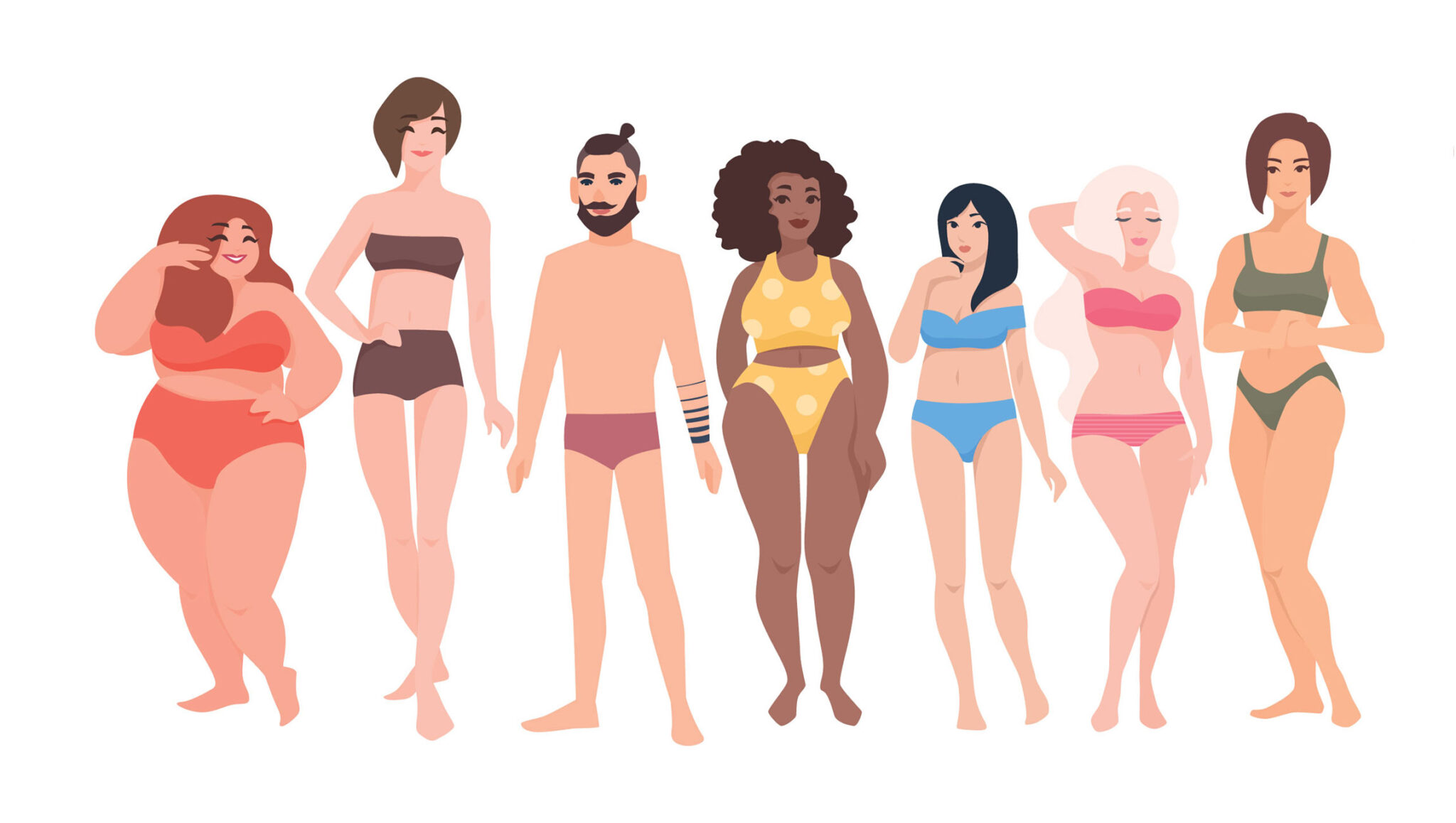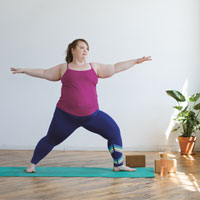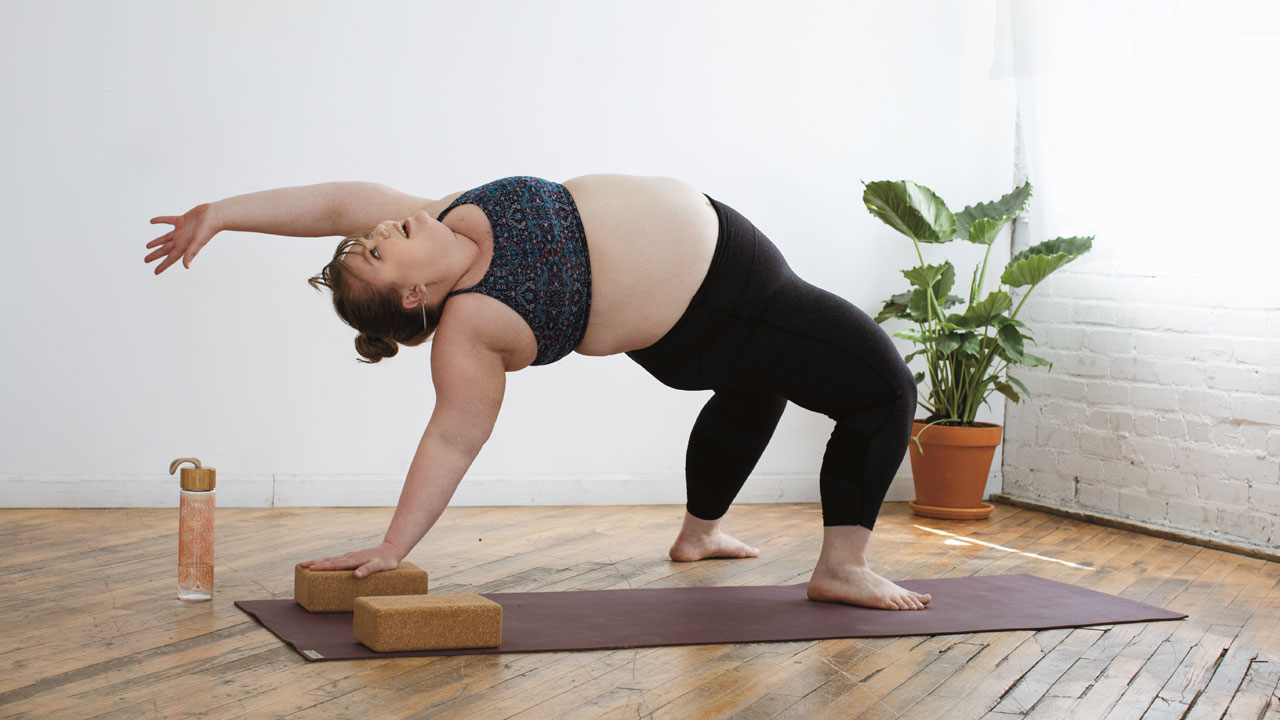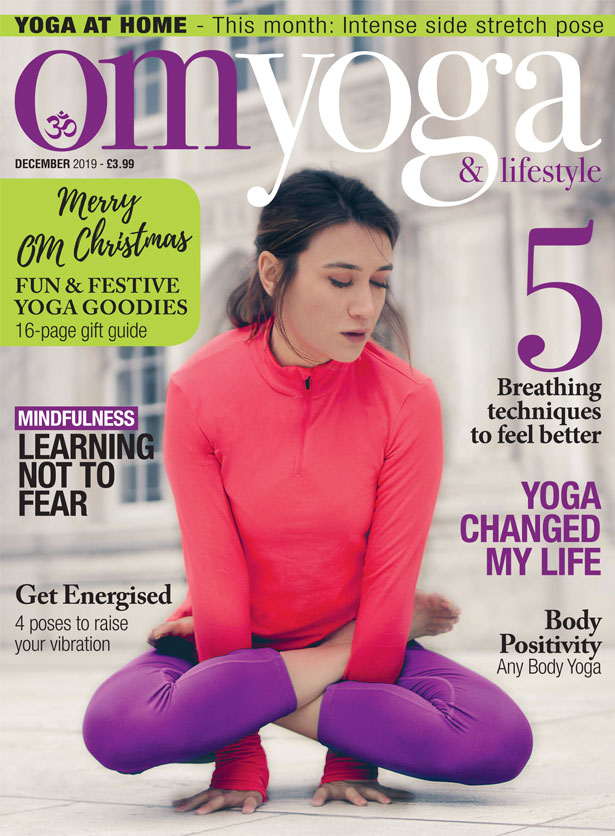
Any Body Yoga
The Body Positivi+y Blog
Emily Martin of Any Body Yoga talks to OM about her experiences as a plus-sized person who teaches yoga. By Jane Lambert
I know what it feels like to be a plussized person in the yoga world, but my experience is limited to taking part in a class as a student. I don’t know how it feels to stand at the front, leading a class, putting yourself into a position where people are watching your body, and in many cases, making judgements based on its size. To get an insight into how this feels, I spoke to Emily Martin, founder of Any Body Yoga, about her experience as a plus-sized person who teaches yoga.
“I used to think that being fat meant that I couldn’t teach yoga,” she tells OM, “but now I see that as one of the cornerstones of my work. I had been practicing yoga for several years, had become an assistant at the studio where I practiced, and had thoughts about eventually teaching yoga, but many of my internalised beliefs about being in a fat body made me doubt if that was something that I could actually do. Thanks to a really great mentor who helped me work through some of those beliefs, I decided to pursue a 200- hour yoga training.”
She decided to pick a course that was a bit different to the Hot Power Vinyasa with which she’d initially begun her practice – a trauma-informed, therapeutic programme. “Through that, I came to understand my experience of living in a fat body in a fatphobic culture as trauma, which is the lens through which I approach my teaching.”
 Based in the US, in Grand Rapids, Michigan, she describes herself as a body positive yoga teacher, and finds that a lot of people who attend her classes are anxious about attending. “I often have people reach out to me to say they are interested in a class or series but are really nervous about it, perhaps because they’ve never done yoga before, or due to doubts about their body’s ability to do yoga, or anxiety about trying a new thing.
Based in the US, in Grand Rapids, Michigan, she describes herself as a body positive yoga teacher, and finds that a lot of people who attend her classes are anxious about attending. “I often have people reach out to me to say they are interested in a class or series but are really nervous about it, perhaps because they’ve never done yoga before, or due to doubts about their body’s ability to do yoga, or anxiety about trying a new thing.
“What I always share with them is that they are not alone. My classes are designed specifically for people who feel this way. And what often happens when we decide to show up anyway, nerves and doubts and all, and we see that we’re not alone in this, is that those nerves and anxiousness and doubts start to have a little less power over our lives.”
“Movement framed as ‘exercise’ can make us forget how much our bodies love moving and cuts us off from that source of joy in life.”
"The other way I encourage this is through reclaiming movement just for the pleasure of it – just because of how good it can feel to move your body. Many of us avoid movement because it has been labelled ‘exercise’, and something we view as a way to punish our body for not being the way we think it ought to be. Movement framed as ‘exercise’ can make us forget how much our bodies love moving and cuts us off from that source of joy in life. We can move just because we like how it feels, without worrying about how many calories we burn, weight we lose, muscles we tone, etc.”
Emily Martin is passionate about creating change, but that doesn’t come without its difficulties. “Teaching and putting myself in the public eye as a fat person is not without its challenges. A few months back a local news show did a segment on my Yoga for Larger Bodies series, and when the video was posted online, there were some incredibly hurtful or belittling comments made about fat people by viewers. It is important to remember that this work is more than just individual – it is also the systemic work of changing culture and institutions to stop the oppression of marginalised bodies. And it isn’t just about fat bodies, it is also about all of the other ways that bodies are marginalised, whether that is due to race/ethnicity, gender identity, sexual orientation or physical abilities.”
She has a slightly different approach from what might be considered the normal way of teaching yoga. “My intention in teaching yoga has always been about guiding us all towards a different way of relating to our bodies. It doesn’t matter to me how close your Warrior II pose is to the textbook model of what it is supposed to look like. What does matter to me is how moving our bodies can help us tune into them more. What can we compassionately observe is happening when we’re in our version of Warrior II? Can these observations wake us up to what our bodies are trying to teach us? And how can listening to our bodies as teachers guide us to live as the truest version of ourselves?”
Find out more about Emily Martin at: anybodyyogagr.com





